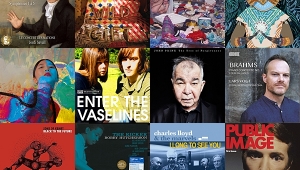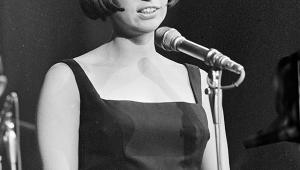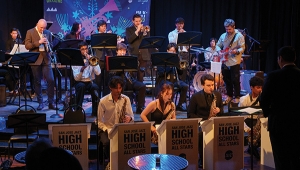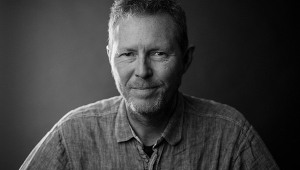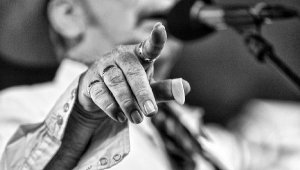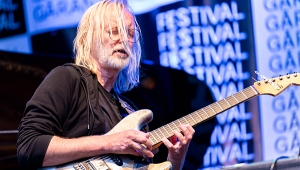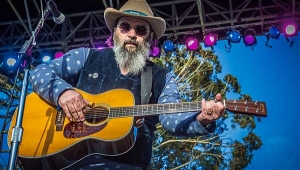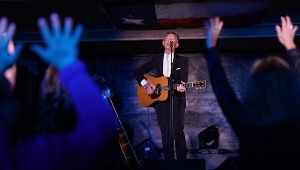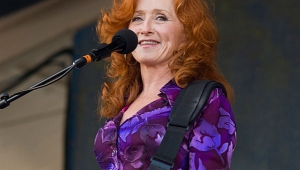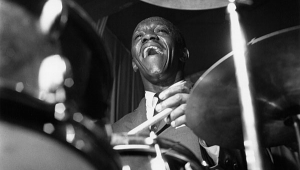| Columns Retired Columns & Blogs |
The Unmaking of Elvis Presley: New Reissues 1960-1972 Page 5
But Jorgensen, Semon, and the other RCA participants did at least compress history a bit when compiling Burning Love. This collection includes the title cut (Elvis's last Top Ten single), six other studio tracks from the same 1972 session, nine live songs from his 1972 stand in Vegas, and a pair of studio tracks from 1971. The recordings date from May 1971 to March 1972—a reasonable stretch for an "album that never was" that groups cuts indicative of Elvis's emotional tenor and singing during a certain period. Jorgensen freely admits that Burning Love is an adventurous packaging job, but he feels that it corrects a grievous wrong.
"RCA wasted [the single of "Burning Love"] on a stupid budget LP. History should be very critical of the Colonel and RCA at this time. At the time they even bragged about it, saying this was the first time a single had appeared on a budget album. We wanted to get rid of the idea that Elvis in a jumpsuit is over the hill. There are a few more shades of gray on this picture. The point with this album is that, in 1972, it didn't have to be sad. In 1976, it did."
This was also a time in recording history when technology was changing rapidly, a point that made the reissue producer's job a little more difficult.
"Studios went from four-track gear to 16-track very quickly, and many of the engineers weren't trained," Jorgensen says. "Elvis's voice on the two-track mixdown is much poorer than on the 16-track. We were astonished to learn that on the two-track machine there was a compressor going while they were recording. And they compressed the master on top of that. It gave his voice a nasal quality." Despite yet another class remastering job, the nasal quality is still obvious on the song, "Burning Love."
Burning Love contains several oddities. For starters, the liner notes—unlike with the rest of the new reissues—fail to list the players. And several of the fades between tracks are abrupt—"Hound Dog" begins just as Elvis starts singing.
The musical curiosities are led by a live version of the Pomus/Shuman number, "Little Sister," which Elvis had first recorded back in 1960, and which here segues into the Beatles' "Get Back." A lazy live version of "Hound Dog" contrasts with a fiery live version of Hoyt Axton's "Never Been to Spain," which at that point (1972) had just been a hit for Three Dog Night. "I'm Leavin'," "Fool," "Separate Ways," and "Always on My Mind" seem to reflect on Elvis's recent separation and impending divorce from his wife, Priscilla. A rousing live blast of Mickey Newbury's "American Trilogy" (the medley of "Dixie," "The Battle Hymn of the Republic," and "All My Trials" that Elvis used as a show-closer), followed by "Impossible Dream," close this disc, which in the end has a pronounced bittersweet feel.
Although he would continue to make records until the summer of his death, in 1977, the period covered by Burning Love was the last time Elvis was cogniscent and able to perform to a high standard. By early 1973, after his Aloha special, he had begun to slip into what Guralnick calls "a deep-seated malaise, which the guys, when they were feeling sympathetic, put down to continued brooding over the loss of Priscilla, but in less charitable moments simply ascribed to the effects of drugs." Unfortunately, this haze became a mortal wound that, four and a half years later, would finally claim its victim. "But in the recordings on these discs, Elvis Presley proves for all time that while may have not always been "The King," he was often a vocal stylist par excellence.
- Log in or register to post comments
